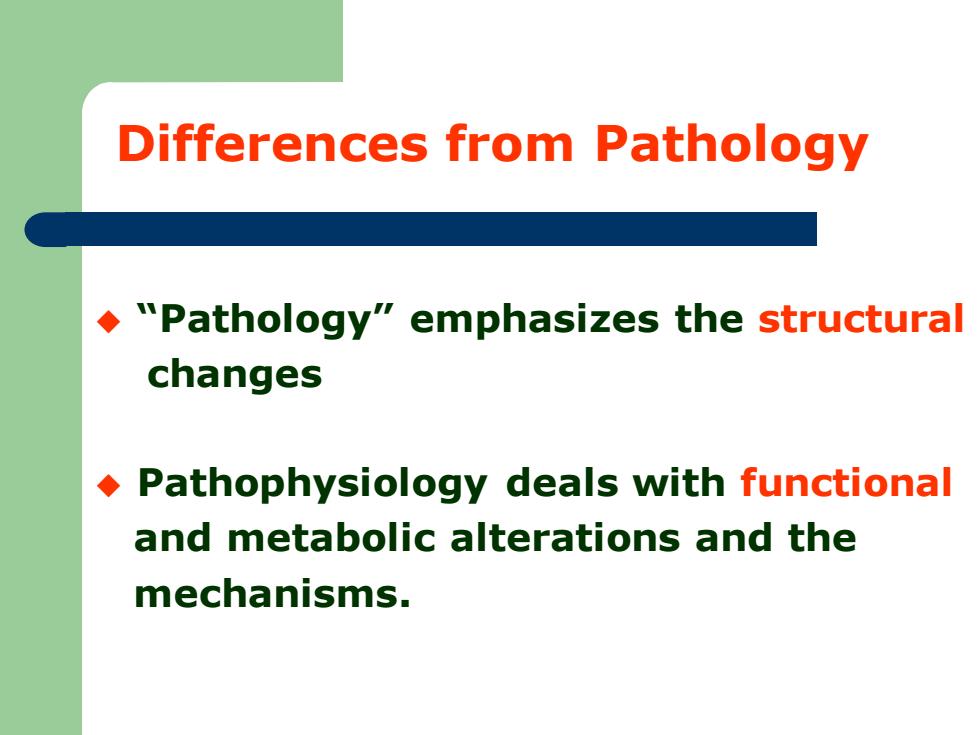
Differencesfrom Pathology"Pathology"emphasizes the structuralchangesPathophysiology deals with functionalandmetabolicalterationsandthemechanisms
Differences from Pathology ◆ “Pathology” emphasizes the structural changes ◆ Pathophysiology deals with functional and metabolic alterations and the mechanisms
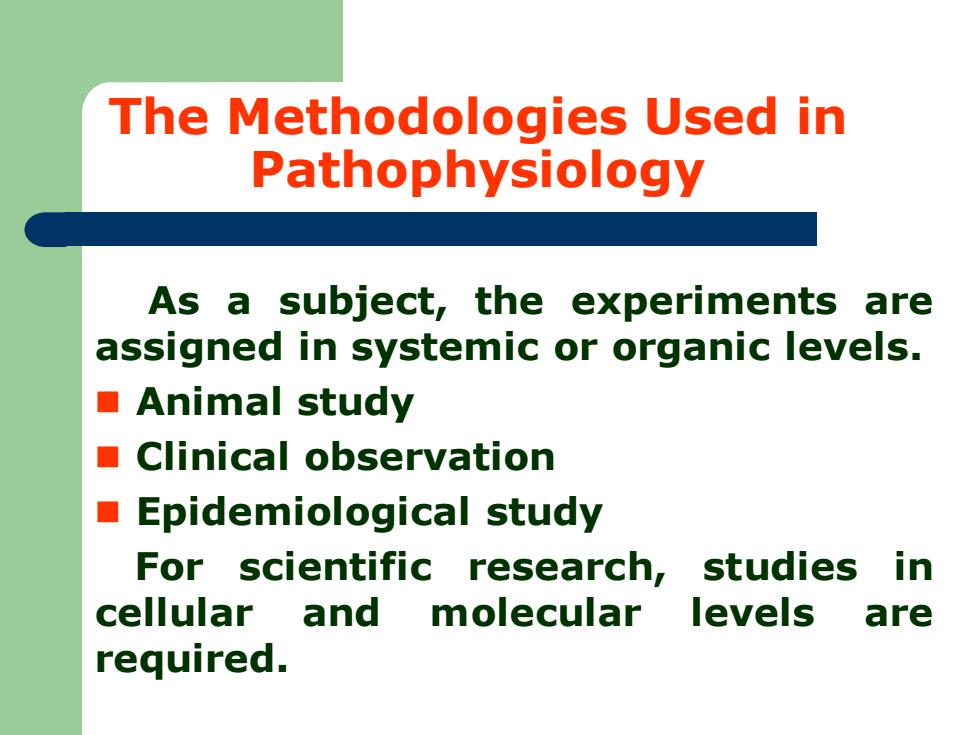
The Methodologies Used inPathophysiologyAs a subject, the experiments areassigned in systemicororganiclevels.Animal studyClinicalobservationEpidemiologicalstudyFor scientificinstudiesresearch,levelsandcellularmoleculararerequired
The Methodologies Used in Pathophysiology As a subject, the experiments are assigned in systemic or organic levels. ◼ Animal study ◼ Clinical observation ◼ Epidemiological study For scientific research, studies in cellular and molecular levels are required
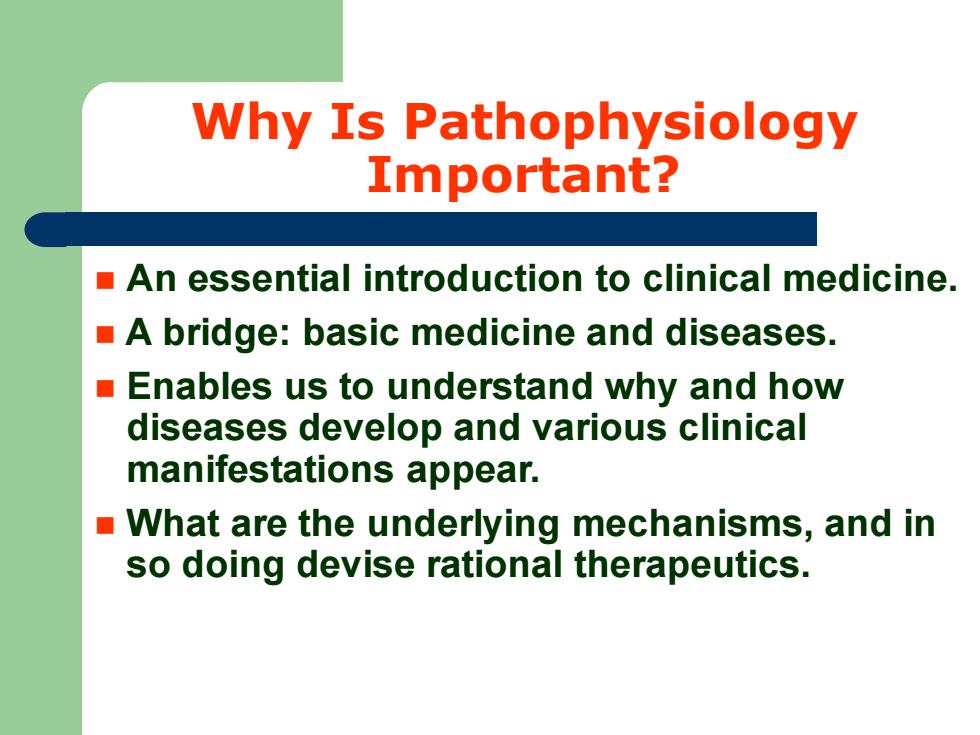
WhyIsPathophysiologyImportant?IAnessentialintroductiontoclinicalmedicine.Abridge:basic medicine anddiseases.Enablesustounderstandwhyandhowdiseases develop andvarious clinicalmanifestationsappear.Whataretheunderlyingmechanisms,andinso doing devise rationaltherapeutics
Why Is Pathophysiology Important? ◼ An essential introduction to clinical medicine. ◼ A bridge: basic medicine and diseases. ◼ Enables us to understand why and how diseases develop and various clinical manifestations appear. ◼ What are the underlying mechanisms, and in so doing devise rational therapeutics
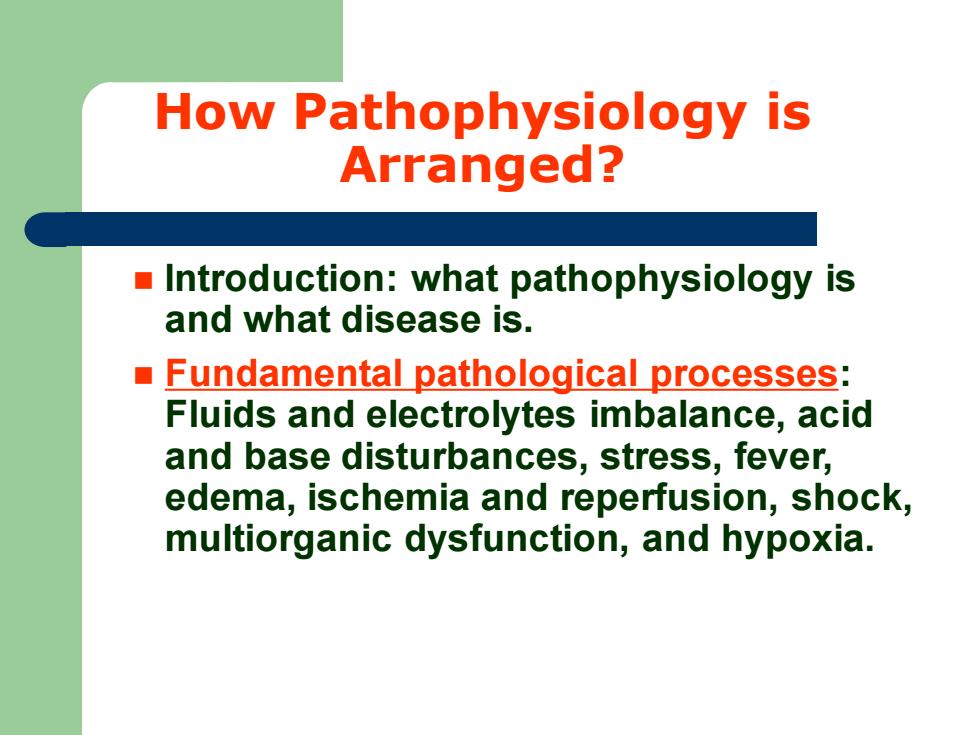
HowPathophysiologyisArranged?Introduction:what pathophysiology isand whatdiseaseis.Fundamental pathological processesFluids and electrolytes imbalance,acidandbasedisturbances,stress,feveredema,ischemiaandreperfusion,shock.multiorganic dysfunction,andhypoxia
How Pathophysiology is Arranged? ◼ Introduction: what pathophysiology is and what disease is. ◼ Fundamental pathological processes: Fluids and electrolytes imbalance, acid and base disturbances, stress, fever, edema, ischemia and reperfusion, shock, multiorganic dysfunction, and hypoxia
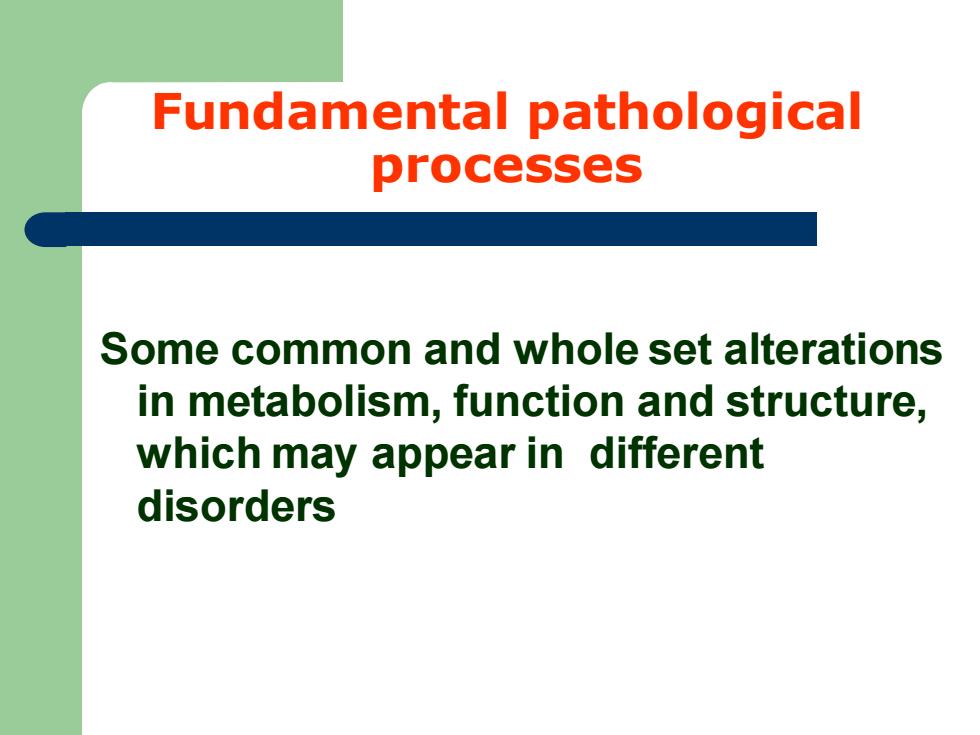
Fundamental pathologicalprocessesSome commonandwholesetalterationsin metabolism,functionandstructure,whichmayappearin differentdisorders
Fundamental pathological processes Some common and whole set alterations in metabolism, function and structure, which may appear in different disorders